Publications
Books & Articles
BOOKS
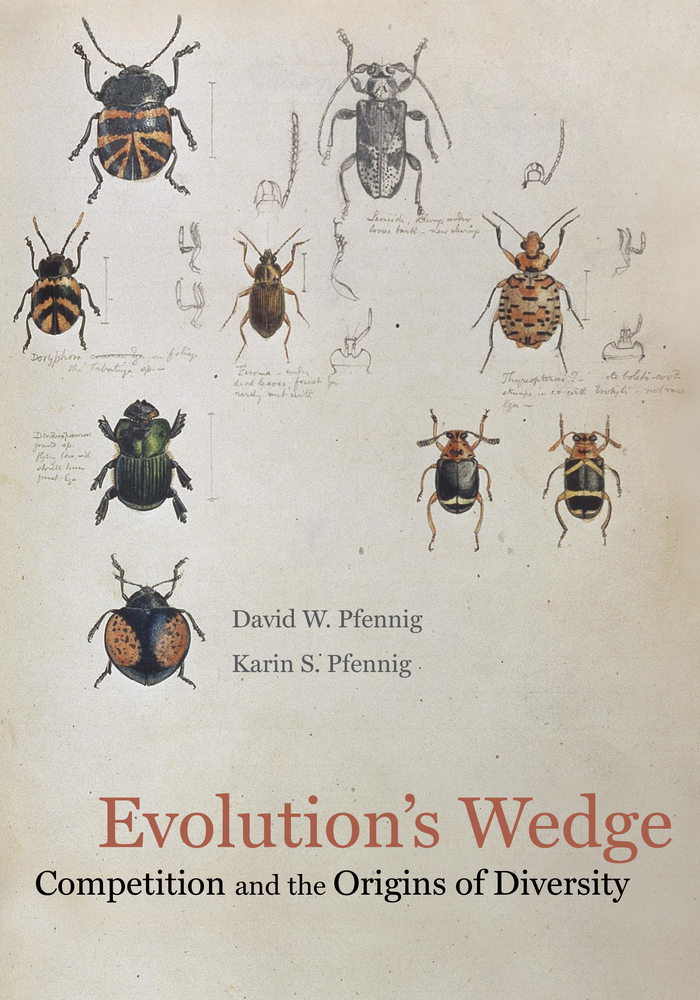
BOOK Pfennig, D. W. and Pfennig, K. S. 2012. Evolution’s Wedge: Competition and the Origins of Diversity. University of California Press, Berkeley, CA.
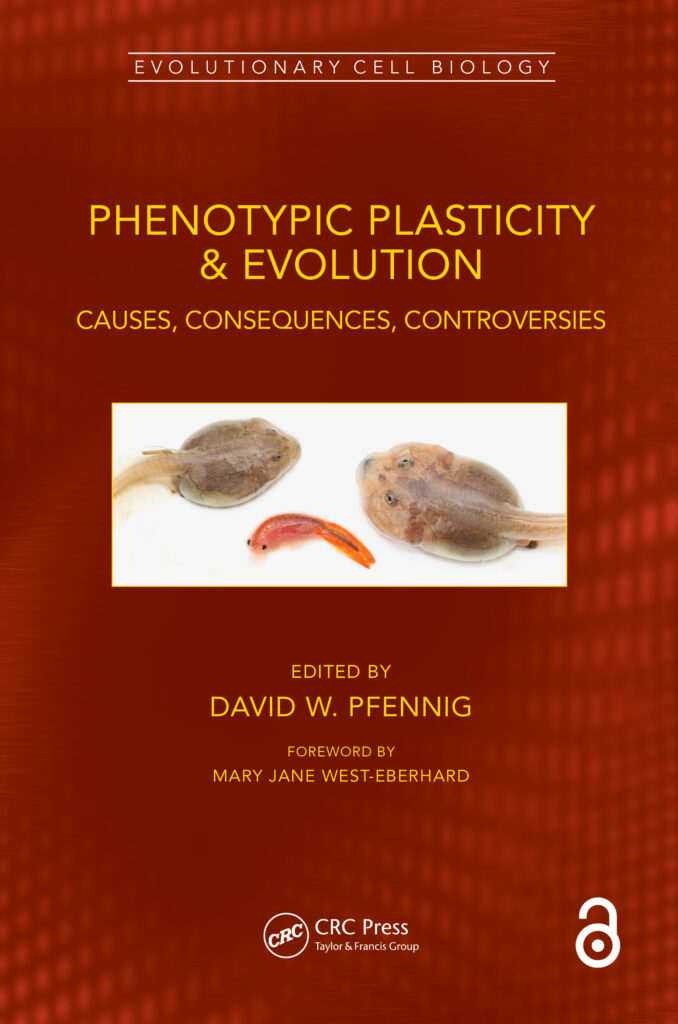
BOOK Pfennig, D. W. (editor). 2021. Phenotypic Plasticity & Evolution: Causes, Consequences, Controversies. CRC Press. Boca Raton, FL. 404 pp.
Click here for an open access e-book version of the book.
ARTICLES & BOOK CHAPTERS
NOTE: PDFs are provided below for non-commercial research and educational use. Not for reproduction, distribution, or commercial use
2022
PDF Levis, N. A., McKay, D. J., and Pfennig, D. W. Disentangling the developmental origins of a novel phenotype: enhancement versus reversal of environmentally induced gene expression. Proceedings of the Royal Society B: Biological Sciences. (in press)
PDF Pfennig, D. W. 2022. Evolution and the flexible organism. American Scientist 110: 94– 101.
2021
PDF Levis, N. A., Kelly, P. W., Harmon, E. A., Ehrenreich. I. M., McKay, D. J., and Pfennig, D. W. 2021. Transcriptomic bases of a polyphenism. Journal of Experimental Zoology Part B: Molecular and Developmental Evolution. 336:482–485.
PDF Allf, B., Sparkman, A., and Pfennig, D. W. 2021. Microevolutionary change in mimicry? Potential erosion of rattling behaviour among nonvenomous snakes on islands lacking rattlesnakes. Ethology Ecology & Evolution 33: 125-136.
PDF Harmon, E. A and Pfennig, D. W. 2021. Evolutionary rescue via transgenerational plasticity: evidence and implications for conservation. Evolution and Development 23:292–307.
PDF Pfennig, D. W. 2021. Key questions about phenotypic plasticity. pp. 55–88. In: D. W. Pfennig (ed.) Phenotypic Plasticity & Evolution: Causes, Consequences, Controversies, CRC Press, Boca Raton, FL
PDF Levis, N. A. and Pfennig, D. W. 2021. Innovation and diversification via plasticity-led evolution. pp. 211–240. In: D. W. Pfennig (ed.) Phenotypic Plasticity & Evolution: Causes, Consequences, Controversies, CRC Press, Boca Raton, FL.
PDF Kelly, P. W., Pfennig, D. W., and Pfennig, K. S. 2021. Adaptive plasticity as a fitness benefit of mate choice. Trends in Ecology & Evolution 36: 294–307.
PDF Kelly, P. W., Pfennig, D. W., and Pfennig, K. S. 2021. A condition-dependent male sexual signal predicts adaptive predator-induced plasticity in offspring. Behavioral Ecology and Sociobiology 75: 28.
2020
PDF de la Serna Buzón, S., Martin, R. A., and Pfennig, D. W. 2020. Carryover effects and the evolution of polyphenism. Biological Journal of the Linnean Society 131: 622-631
PDF Pfennig, D. W. and Pfennig, K. S. 2020. Quick guide: character displacement. Current Biology 30: R1023–1024.
PDF Levis, N. A., Reed, E. M. X., Pfennig, D. W., Burford Reiskind, M. O. 2020. Identification of candidate loci for adaptive phenotypic plasticity in natural populations of spadefoot toads. Ecology and Evolution 10: 8976–8988.
PDF Levis, N. A., Fuller, C, and Pfennig, D. W. 2020. An experimental investigation of how intraspecific competition and phenotypic plasticity can promote the evolution of novel, complex phenotypes. Biological Journal of the Linnean Society 131: 76–87.
PDF Pfennig, K. S. and Pfennig, D. W. 2020. Dead spadefoot tadpoles adaptively modify development in future generations: a novel form of nongenetic inheritance? Copeia 108: 116-121.
PDF Levis, N. A. and Pfennig, D. W. 2020. Evolution: ancestral plasticity promoted extreme temperature adaptation in thermophilic bacteria. Current Biology 30: R68–R70.
Levis, N. A. and Pfennig, D. W. 2020. Phenotypic plasticity and the origins of novelty. pp. 443–458. In H. Levine, M. K. Jolly, P. Kulkarni, and V. Nanjundiah (eds.) Phenotypic Switching: Implications in Biology and Medicine, Academic Press, San Diego, CA.
PDF Levis, N. A. and Pfennig, D. W. 2020. Plasticity-led evolution: a survey of developmental mechanisms and empirical tests. Evolution and Development 22: 71–77.
2019
PDF Seidl, F., Levis, N. A., Schell, R., Pfennig, D. W., Pfennig, K. S., and Ehrenreich, I. M. 2019. Genome of Spea multiplicata, a rapidly developing, phenotypically plastic, and desert-adapted spadefoot toad. G3: Genes, Genomes, Genetics 9: 3909–3919.
PDF Akcali, C. K., Perez-Mendoza, H. A., Kikuchi, D. W., and Pfennig, D. W. 2019. Multiple models generate a geographical mosaic of resemblance in a Batesian mimicry complex. Proceedings of the Royal Society B: Biological Sciences 286: 20191519.
PDF Levis, N. A. and Pfennig, D. W. 2019. How stabilizing selection and nongenetic inheritance combine to shape the evolution of phenotypic plasticity. Journal of Evolutionary Biology 32: 706–716.
PDF Levis, N. A. and Pfennig, D. W. 2019. Plasticity-led evolution: evaluating the key prediction of frequency-dependent adaptation. Proceedings of the Royal Society B: Biological Sciences 286: 20182754.
PDF Akcali, C. K., Mendoza, H. A. P., Salazar-Valenzuela, D., Kikuchi, D. W., Guayasamin, J. M., and Pfennig, D. W. 2019. Evaluating the utility of camera traps in field studies of predation. PeerJ 7:e6487.
PDF Kelly, P. W., Pfennig, D. W., de la Serna Buzón, S., and Pfennig, K. S. 2019. Male sexual signals predict phenotypic plasticity in offspring: implications for the evolution of plasticity and local adaptation. Philosophical Transactions of the Royal Society B 374: 20180179.
PDF Levis, N. A. and Pfennig, D. W. 2019. Phenotypic plasticity, canalization, and the origins of novelty: evidence and mechanisms from amphibians. Seminars in Cell and Developmental Biology 88: 80-90.
2018
PDF Levis, N. A., Isdaner, A., and Pfennig, D. W. 2018. Morphological novelty emerges from pre-existing phenotypic plasticity. Nature Ecology and Evolution 2: 1289–1297.
PDF Akcali, C., Kikuchi, D. W., and Pfennig, D. W. 2018. Coevolutionary arms races in Batesian mimicry? A test of the chase-away hypothesis. Biological Journal of the Linnean Society 124: 668–676.
PDF Levis, N. A. and Pfennig, D. W. 2018. Evolution of phenotypic plasticity and gene expression during character displacement. eLS John Wiley & Sons Ltd, Chichester. http://www.els.net (doi: 10.1002/9780470015902.a0028159).
2017
PDF Levis, N. A., Martin, R. A., O’Donnell, K. A., and Pfennig, D. W. 2017. Intraspecific adaptive radiation: competition, ecological opportunity, and phenotypic diversification within species. Evolution 71: 2496-2509.
PDF Levis, N. A., Serrato-Capuchina, A. and Pfennig, D. W. 2017. Genetic accommodation in the wild: evolution of gene expression plasticity during character displacement. Journal of Evolutionary Biology 30: 1712-1723.
PDF Akcali, C. and Pfennig, D. W. 2017. Geographic variation in mimetic precision among different species of coral snake mimics. Journal of Evolutionary Biology 30: 1420-1428.
PDF Levis, N. A. and Pfennig, D. W. 2017. Phenotypic plasticity. In Oxford Bibliographies in Evolutionary Biology (http:// www.oxfordbibliographiesonline.com/).
PDF Bono, L. M., Smith, L. B., Pfennig, D. W., and Burch, C. L. 2017. The emergence of trade-offs during local adaptation: insights from experimental evolution. Molecular Ecology 26: 1720-1733.
PDF Pfennig, D. W. 2017. Principle of divergence. In V. Zeigler-Hill and T. Shackelford (eds.) Encyclopedia of Personality and Individual Differences. Springer (doi:10.1007/978-3-319-28099-8_1561-1).
Levis, N. A. and Pfennig, D. W. 2017. Organisms and their environment: an evolving relationship. Evolution 71: 503-504. (book review of Organism and environment: ecological development, niche construction, and adaptation by S. E. Sultan)
2016
PDF Allf, B. C., Durst, P. A. D., and Pfennig, D. W. 2016. Behavioral plasticity and the origins of novelty: the evolution of the rattlesnake rattle. The American Naturalist 188: 473-483.
PDF Pfennig, D. W. 2016. To mimicry and back again. Nature 534: 184-185. (invited “News and Views” commentary).
PDF Levis, N. and Pfennig, D. W. 2016. Evaluating ‘plasticity-first’ evolution in nature: key criteria and empirical approaches. Trends in Ecology and Evolution 31: 563-574.
PDF Pfennig, D. W. 2016. Ecological evolutionary developmental biology. pp. 474-481. In R. M. Kliman (ed.) Encyclopedia of Evolutionary Biology, vol. 1. Academic Press, Oxford.
PDF Ehrenreich, I. M. and Pfennig, D. W. 2016. Genetic assimilation: a review of its proximate causes and evolutionary consequences. Annals of Botany 117: 769-779.
2015
PDF Bono, L. M., Gensel, C. L., Pfennig, D. W., and Burch, C. L. 2015. Evolutionary rescue and the coexistence of generalist and specialist competitors: an experimental test. Proceedings of the Royal Society of London, Series B 282: 20151932.
PDF Pfennig, K. S., Pfennig, D. W., Porter, C., and Martin, R. A. 2015. Sexual selection’s impacts on ecological specialisation: an experimental test. Proceedings of the Royal Society of London, Series B 282: 20150217.
PDF Murren, C. J., Auld, J. R., Callahan, H. S., Ghalambor, C. K., Handelsman, C. A., Heskel, M. A., Kingsolver, J. G., Maclean, H. J., Masel, J., Maughan, H., Pfennig, D. W., Relyea, R. A., Seiter, S, Snell-Rood, E., Steiner, U. K., Schlichting, C. D. 2015. Constraints on the evolution of phenotypic plasticity: limits and costs of phenotype and plasticity. Heredity 115: 293-301.
PDF Levis, N. A., de la Serna Buzon, S., Pfennig, D. W. 2015. An inducible offense: carnivore morph tadpoles induced by tadpole carnivory. Ecology and Evolution 5: 1405-1411.
PDF Pfennig, D. W., Akcali, C., and Kikuchi, D. W. 2015. Batesian mimicry promotes pre- and post-mating isolation in a snake mimicry complex. Evolution 69: 1085-1090.
2014
PDF Pfennig, D. W. and Ehrenreich, I. M. 2014. Toward a gene regulatory network perspective on phenotypic plasticity, genetic accommodation, and genetic assimilation. Molecular Ecology 23: 4438–4440.
PDF Ledón-Rettig, C. Pfennig, D. W., Chunco, A., and Dworkin, I. 2014. Cryptic genetic variation in natural populations: a predictive framework. Integrative and Comparative Biology 54: 783-793.
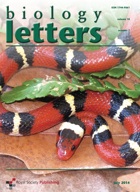
PDF Akcali, C. K. and Pfennig, D. W. 2014. Rapid evolution of mimicry following local model extinction. Biology Letters 10: 20140304.
PDF Murren, C. J., Maclean, H. J., Diamond, S. E., Steiner, U. K., Heskel, M. A., Handelsman, C. A., Ghalambor, C. K., Auld, J. R., Callahan, H. S., Pfennig, D. W., Relyea, R. A., Schlichting, C. D., and Kingsolver, J. G. 2014. Evolutionary change in continuous reaction norms. The American Naturalist 183: 453-467.
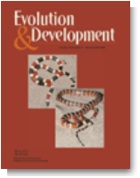
PDF Kikuchi, D. W., Seymoure, B. W., and Pfennig, D. W. 2014. Mimicry’s palette: widespread use of conserved pigments in the aposematic signals of snakes. Evolution and Development 16: 61-67.
PDF Titcombe, G. C., Kikuchi, D. W. and Pfennig, D. W. 2014. More than mimicry? Evaluating scope for flicker-fusion as a defensive strategy in coral snake mimics. Current Zoology 60: 123-130.
PDF Pitnick, S. and Pfennig, D. W. 2014. Brotherly love benefits females. Nature 505: 626-627. (invited “News and Views” commentary).
2013
PDF Kikuchi, D. W. and Pfennig, D. W. 2013. Imperfect mimicry and the limits of natural selection. Quarterly Review of Biology 88: 297-315.
PDF Robinson, B. W. and Pfennig, D. W. 2013. Inducible competitors and diversification. Current Zoology 59: 537-552.
PDF Pfennig, D. W. and Servedio, M. R. 2013. The role of transgenerational epigenetic inheritance in diversification and speciation. Non-genetic Inheritance 1: 17-26.
Kingsolver, J. G. and Pfennig, D. W. 2013. Responses to selection: natural populations. pp. 238-246. In J. B. Losos (ed.) The Princeton Guide to Evolution, Princeton University Press, Princeton, NJ.
PDF Bono, L. M., Gensel, C. L., Pfennig, D. W., and Burch, C. L. 2013. Competition and the origins of novelty: experimental evolution of host-range expansion in a virus. Biology Letters 9: 20120616.
PDF Pfennig, D. W. 2013. Inviable immigrants drive diversification in the sea. Proceedings of the National Academy of Sciences, USA 110: 3713-3714. (invited commentary).
2012
PDF Paull, J. S., Martin, R. A. and Pfennig, D. W. 2012. Increased competition as a cost of specialization during the evolution of resource polymorphism. Biological Journal of the Linnean Society 107: 845-853.
PDF Martin, R. A. and Pfennig, D. W. 2012. Widespread disruptive selection in the wild is associated with intense resource competition. BMC Evolutionary Biology 12: 136.
PDF Pfennig, D. W. and Kikuchi, D. W. 2012. Life imperfectly imitates life. Nature 483: 410-411. (invited “News and Views” commentary).
PDF Pfennig, D. W. 2012. Mimicry: ecology, evolution, and development. Current Zoology 58: 603-606. (invited commentary).
PDF Pfennig, D. W. and Kikuchi, D. W. 2012. Competition and the evolution of imperfect mimicry. Current Zoology 58: 607-618.
PDF Kikuchi, D. W. and Pfennig, D. W. 2012. A Batesian mimic and its model share color production mechanisms. Current Zoology 58: 657-666.
PDF Ledón-Rettig, C. and Pfennig, D. W. 2012. Antipredator behavior promotes diversification of feeding strategies. Integrative and Comparative Biology 52: 53-63.
PDF Leichty, A., Pfennig, D. W., Jones, C. and Pfennig, K. S. 2012. Relaxed genetic constraint is ancestral to the evolution of phenotypic plasticity. Integrative and Comparative Biology 52: 16-30.
PDF Kikuchi, D. W. and Pfennig, D. W. 2012. Mimicry. Oxford Bibliographies in Ecology (http://oxfordbibliographiesonline.com/page/Ecology).
PDF Pfennig, D. W. and Pfennig, K. S. 2012. Development and evolution of character displacement. Annals of the N.Y. Academy of Sciences: The Year in Evolutionary Biology 1256: 89-107.
2011
PDF Moczek, A. P., Sultan, S., Foster, S. A. , Ledón-Rettig, C., Dworkin, I., Nijhout, H. F., Abouheif, E., and Pfennig, D. W. 2011. The role of developmental plasticity in evolutionary innovation. Proceedings of the Royal Society of London, Series B 278: 2705–2713.
PDF Ledón-Rettig, C. and Pfennig, D. W. 2011. Emerging model systems in eco-evo-devo: the environmentally responsive spadefoot toad. Evolution and Development 13: 391-400.
Kingsolver, J. G. and Pfennig, D. W. 2011. Darwin in the 21st Century. Evolution 65: 2130–2132. (review of Evolution Since Darwin, edited by M. Bell, D. Futuyma, W. Eanes, and J. Levinton).
Abbot, P. et al. 2011. Inclusive fitness theory and eusociality. Nature 471: E1-E4. (Brief communication arising).
PDF Martin, R. A. and Pfennig, D. W. 2011. Evaluating the targets of selection during character displacement. Evolution 65: 2946-2958.
2010
PDF Kikuchi, D. W. and Pfennig, D. W. 2010. Predator cognition permits imperfect coral snake mimicry. The American Naturalist 176: 830-834.
PDF Pfennig, D. W. and Pfennig, K. S. 2010. Character displacement and the origins of diversity. The American Naturalist 176: S22-S44.
PDF Ledón-Rettig, C., Pfennig, D. W., and Crespi, E. J. 2010. Diet and hormone manipulations reveal cryptic genetic variation: implications for the evolution of novel feeding strategies. Proceedings of the Royal Society of London, Series B 277: 3569–3578.
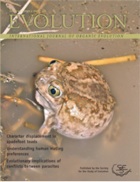
PDF Pfennig, D. W. and Martin, R. A. 2010. Evolution of character displacement in spadefoot toads: different proximate mechanisms in different species. Evolution 64: 2331-2341.
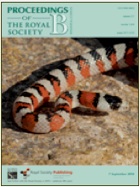
PDF Pfennig, D. W. and Mullen, S. P. 2010. Mimics without models: causes and consequences of allopatry in Batesian mimicry. Proceedings of the Royal Society of London, Series B 277: 2577-2585.
PDF Pfennig, D. W., Wund, M. A., Snell-Rood, E. C., Cruickshank, T., Schlichting, C. D., and Moczek, A. P. 2010. Phenotypic plasticity’s impacts on diversification and speciation. Trends in Ecology and Evolution 25: 459–467.
PDF Martin, R. A. and Pfennig, D. W. 2010. Field and experimental evidence that competition and ecological opportunity promote resource polymorphism. Biological Journal of the Linnean Society 100: 73-88.
PDF Rice, A. M. and Pfennig, D. W. 2010. Does character displacement initiate speciation? Evidence of reduced gene flow between populations experiencing divergent selection. Journal of Evolutionary Biology 23: 854–865.
PDF Kikuchi, D. W. and Pfennig, D. W. 2010. High model abundance may permit the gradual evolution of Batesian mimicry: an experimental test. Proceedings of the Royal Society of London, Series B 277:1041-1048.
PDF Martin, R. A. and Pfennig, D. W. 2010. Maternal investment influences expression of resource polymorphism in amphibians: implications for the evolution of novel resource-use phenotypes. PLoS ONE 5(2): e9117.
PDF Pfennig, D. W. and McGee, M. 2010. Resource polyphenism increases species richness: a test of the hypothesis. Philosophical Transaction of the Royal Society of London, Series B 365: 577-591.
2009
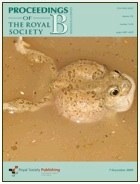
PDF Rice, A. M., Leichty, A., and Pfennig, D. W. 2009. Parallel evolution and ecological selection: replicated character displacement in spadefoot toads. Proceedings of the Royal Society of London, Series B 276: 4189-4196.
PDF Ledón-Rettig, C., Pfennig, D. W., and Crespi, E. J. 2009. Stress hormones and the fitness consequences associated with consuming a novel diet in larval amphibians. Journal of Experimental Biology 212: 3743-3750.
PDF Pfennig, K. S. and Pfennig, D. W. 2009. Character displacement: ecological and reproductive responses to a common evolutionary problem. Quarterly Review of Biology 84: 253-276.
Pfennig, D. W. and Kingsolver, J. G. 2009. Phenotypic selection. pp. 101-108. In S. A. Levin (ed.) The Princeton Guide to Ecology, Princeton University Press, Princeton, NJ.
PDF Martin, R. A. and Pfennig, D. W. 2009. Disruptive selection in natural populations: the roles of ecological specialization and resource competition. The American Naturalist 174: 268-281.
PDF Pfennig, D. W. and Ledón-Rettig, C. 2009. The flexible organism. Science 325: 268-269. (review of Ecological Developmental Biology by S. F. Gilbert and D. Epel).
PDF Pfennig, D. W. and Martin, R. A. 2009. A maternal effect mediates rapid population divergence and character displacement in spadefoot toads. Evolution 63: 898-909.
2008
PDF Rice, A. M. and Pfennig, D. W. 2008. Analysis of range expansion in two species undergoing character displacement: Why might invaders generally “win” during character displacement? Journal of Evolutionary Biology 21: 696-704.
PDF Ledon-Rettig, C., Pfennig, D. W., and Nascone-Yoder, N. 2008. Ancestral variation and the potential for genetic accommodation in larval amphibians: Implications for the evolution of novel feeding strategies. Evolution and Development 10: 316-325.
PDF Harper, G. R. Jr. and Pfennig, D. W. 2008. Selection overrides gene flow to break down maladaptive mimicry. Nature 451: 1103-1106.
2007
PDF Pfennig, D. W. and Rice, A. M. 2007. An experimental test of character displacement’s role in promoting postmating isolation between conspecific populations in contrasting competitive environments. Evolution 61: 2433-2443.
PDF Harper, G. R. Jr. and Pfennig, D. W. 2007. Mimicry on the edge: Why do mimics vary in resemblance to their model in different parts of their geographical range? Proceedings of the Royal Society of London, Series B 274: 1955-1961.
PDF Kingsolver, J. G. and Pfennig, D.W. 2007. Patterns and power of phenotypic selection in nature. BioScience 57: 561-572.
PDF Pfennig, D. W., Rice, A. M., and Martin, R. A. 2007. Field and experimental evidence for competition’s role in phenotypic divergence. Evolution 61: 257-271.
PDF Rice, A. M. and Pfennig, D. W. 2007. Character displacement: in situ evolution of novel phenotypes or sorting of pre-existing variation? Journal of Evolutionary Biology 20: 448-459.
PDF Pfennig, D. W., Harper, G. R. Jr., Brumo, A. F., Harcombe, W. R., and Pfennig, K. S. 2007. Population differences in predation on Batesian mimics in allopatry with their model: selection against mimics is strongest when they are common. Behavioral Ecology and Sociobiology 61: 505-511.
2006
PDF Pfennig, D. W., Rice, A. M., and Martin, R. A. 2006. Ecological opportunity and phenotypic plasticity interact to promote character displacement and species coexistence. Ecology 87: 769-779.
2005
PDF Pfennig, K. S. and Pfennig, D. W. 2005. Character displacement as the ‘best of a bad situation’: fitness trade-offs resulting from selection to minimize resource and mate competition. Evolution 59: 2200-2208.
2004
PDF Kingsolver, J. G. and Pfennig, D.W. 2004. Individual-level selection as a cause of Cope’s rule of phyletic size increase. Evolution 58: 1608-1612.
Bull, J. J., Pfennig, D. W., and Wang, I-N. 2004. Genetic details, optimization and phage life histories. Trends in Ecology and Evolution 19: 76-82.
PDF Pfennig, D. W. 2004. Putting genes in perspective. The American Scientist 92: 84-86. (review of Developmental Plasticity and Evolution, by M. J. West-Eberhard).
2003
PDF Pfennig, D. W. and Murphy, P. J. 2003. A test of alternative hypotheses for character divergence between coexisting species. Ecology 84: 1288-1297.
PDF Reeve, H. K., Pfennig, D. W. (equal-authored) 2003. Genetic biases for showy males: are some genetic systems especially conducive to sexual selection? Proceedings of the National Academy of Sciences, USA 100: 1089-1094.
2002
PDF Pfennig, D. W. and Murphy, P. J. 2002. How fluctuating competition and phenotypic plasticity mediate species divergence. Evolution 56: 1217-1228.
Kingsolver, J. G., Pfennig, D. W., and Servedio, M. R. 2002. Migration, local adaptation, and the evolution of plasticity. Trends in Ecology and Evolution 17: 540-541.
Pfennig, D. W. 2002. Kin recognition. pp. 592-595. In M. Pagel (ed) Encyclopedia of Evolution, Oxford University Press, Oxford.
2001
PDF Frankino, W. A. and Pfennig, D. W. 2001. Condition-dependent expression of trophic polyphenism: effects of individual size and competitive ability. Evolutionary Ecology Research 3: 939-951.
PDF Pfennig, D. W., Harcombe, W. R., and Pfennig, K. S. 2001. Frequency-dependent Batesian mimicry. Nature 410: 323.
Kingsolver, J. G. and Pfennig, D. W. 2001. Testing Darwin’s postulates. Trends in Ecology and Evolution 16: 165. (review of Adaptive Genetic Variation in the Wild, Edited by T. Mousseau, B. Sinervo, and J. A. Endler).
2000
PDF Pfennig, D. W. and Murphy, P. J. 2000. Character displacement in polyphenic tadpoles. Evolution 54: 1738-1749.
PDF Pfennig, D. W. 2000. Effect of predator-prey phylogenetic distance on the fitness consequences of predation: a tradeoff between nutrition and disease? The American Naturalist 155: 335-345.
Loeb, M. L. G., Diene, L. and Pfennig, D. W. 2000. Egg dumping lace bugs preferentially oviposit with kin. Animal Behaviour 59: 379-383.
Pfennig, D. W. 2000. Attack of the tadpoles! Dragonfly 4: 16-17.
1999
PDF Pfennig, D. W., Collins, J. P., and Ziemba, R.E. 1999. A test of alternative hypotheses for kin recognition in cannibalistic tiger salamanders. Behavioral Ecology 10: 436-443.
PDF Pfennig, D. W. 1999. Cannibalistic tadpoles that pose the greatest threat to kin are most likely to discriminate kin. Proceedings of the Royal Society of London, Series B 266: 57-61.
Hoffman, E. A. and Pfennig, D. W. 1999. Proximate causes of cannibalistic polyphenism in larval tiger salamanders. Ecology 80: 1076-1080.
1998
PDF Pfennig, D. W., Ho*, S., and Hoffman†, E. A. 1998. Pathogen transmission as a selective force against cannibalism. Animal Behaviour 55: 1255-1261.
Pfennig, D. W. 1998. The evolution of selflessness and selfishness. BioScience 48:9-11. (review of Survival Strategies: Cooperation and Conflict in Animal Societies, by R. Gadagkar).
Sherman, P. W., Reeve, H. K., and Pfennig, D. W. 1997. Recognition systems. pp. 69-96. In J. R. Krebs and N. B. Davies (eds) Behavioural Ecology: An Evolutionary Approach, 4th edn, Blackwell Scientific Publications, Oxford.
Early to Mid 1990s
Pfennig, D. W. 1995. Absence of joint nesting advantage in desert seed harvester ants: evidence from a field experiment. Animal Behaviour 49: 567-575.

PDF Pfennig, D. W. and Sherman, P. W. 1995. Kin recognition. Scientific American 272 (6): 98-103.
PDF Pfennig, D. W., Sherman, P. W., and Collins, J. P. 1994. Kin recognition and cannibalism in polyphenic salamanders. Behavioral Ecology 5: 225-232.
Pfennig, D. W. 1994. Cannibalism. Journal of Evolutionary Biology 4:121-123. (review of Cannibalism. Ecology and Evolution among Diverse Taxa, Edited by M. A. Elgar and B. J. Crespi).

PDF Pfennig, D. W. and Collins, J. P. 1993. Kinship affects morphogenesis in cannibalistic salamanders. Nature 362: 836-838.
Pfennig, D. W. and Reeve, H. K. 1993. Nepotism in a solitary wasp as revealed by DNA fingerprinting. Evolution 47: 700-704.
PDF Pfennig, D. W., Reeve, H. K., and Sherman, P. W. 1993. Kin recognition and cannibalism in spadefoot toad tadpoles. Animal Behaviour 46: 87-94.
PDF Pfennig, D. W. 1992. Polyphenism in spadefoot toad tadpoles as a locally-adjusted evolutionarily stable strategy. Evolution 46: 1408-1420.
Pfennig, D. W. 1992. Social evolution of wasps. Journal of Evolutionary Biology 5: 729-731. (review of The Social Biology of Wasps, Edited by K. G. Ross and R. W. Matthews).
Pfennig, D. W. and Sherman, P. W. 1992. Identifying relatives. Science 255: 217-218. (review of Kin Recognition, Edited by P. G. Hepper).
PDF Pfennig, D. W. 1992. Proximate and functional causes of polyphenism in an anuran tadpole. Functional Ecology 6: 167-174.
Pfennig, D. W., Mabry, A., and Orange, D. 1991. Environmental causes of correlations between age and size at metamorphosis in Scaphiopus multiplicatus. Ecology 72: 2240-2248.
PDF Pfennig, D. W., Loeb, M. L. G., and Collins, J. P. 1991. Pathogens as a factor limiting the spread of cannibalism among tiger salamanders. Oecologia 88: 161-166.
PDF Pfennig, D. W. 1990. “Kin recognition” among spadefoot toad tadpoles: a side-effect of habitat selection? Evolution 44: 785-798.
Pfennig, D. W. 1990. Nestmate and nest discrimination among workers from neighboring colonies in social wasps, Polistes exclamans. Canadian Journal of Zoology 68: 268-271.
PDF Pfennig, D. W. 1990. The adaptive significance of an environmentally-cued developmental switch in an anuran tadpole. Oecologia 85: 101-107.
1980s
Pfennig, D. W. and Reeve, H. K. 1989. Neighbor recognition and context-dependent aggression in a solitary wasp, Sphecius speciosus (Hymenoptera: Sphecidae). Ethology 80: 1-18.
PDF Gamboa, G. J., Reeve, H. K., and Pfennig, D.W. 1986. The evolution and ontogeny of nestmate recognition in social wasps. Annual Review of Entomology 31: 431-454.
Pfennig, D. W. and Klahn, J. E. 1985. Dominance as a predictor of cofoundress disappearance order in social wasps (Polistes fuscatus). Zeitschrift für Tierpsychologie (= Ethology) 67: 198-203.
Reeve, H. K., Shellman Reeve, J., and Pfennig, D. W. 1985. Eusociality and genetic variability: a re-evaluation. Evolution 39: 200-201.
Cothran, E. G., MacCluer, J. W., Weitkamp, L. R., Pfennig, D. W., and Boyce, A. J. 1984. Inbreeding and reproductive performance in Standardbred horses. Journal of Heredity 75: 220-224.
MacCluer, J. W., Boyce, A. J., Dyke, B., Weitkamp, L. R., Pfennig, D. W., and Parsons, C. J. 1983. Inbreeding and pedigree structure in Standardbred horses. Journal of Heredity 74: 394-399.
Pfennig, D. W., Gamboa, G. J., Reeve, H K., Shellman Reeve, J., and Ferguson, I. D. 1983. The mechanism of nestmate discrimination in social wasps (Polistes, Hymenoptera: Vespidae). Behavioral Ecology and Sociobiology 13: 299-305.
Pfennig, D. W., Reeve, H. K., and Shellman, J. S. 1983. Learned component of nestmate discrimination in workers of a social wasp, Polistes fuscatus (Hymenoptera: Vespidae). Animal Behaviour 31: 412-416.
